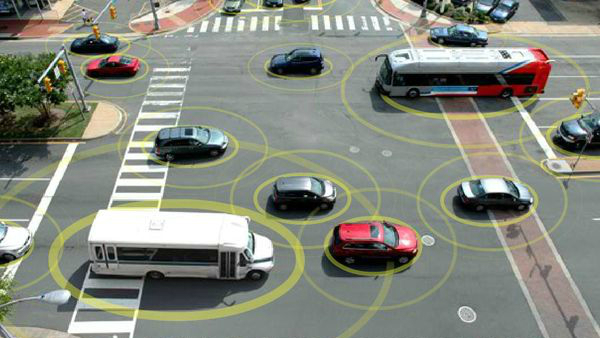How vehicle-to-vehicle communication could save (and endanger) lives
Analysis: Cars will soon talk to each other, but what does that mean?
V2V is vital to self-driving technology
Of course, while vehicle-to-vehicle communication might be able to inform the driver about freak scenarios, that doesn't change the fact that self-driving cars are on their way. Once self-driving cars hit, vehicle-to-vehicle communication will be even more crucial.
What's likely to happen is that we won't see a sudden shift from human driving to self-driving. Instead, cars will likely become increasingly "assisted," and will initially be able to drive themselves in scenarios like the highway instead of in complex cities.

Eventually, cars may be able to totally drive themselves, but during the transition period, communication between cars will be key. Cars will need to know when a good time is to hand the wheel back to the driver, for example. On the connected first cars, V2V technologies will include alerts to drivers, such as when a car might be stopped ahead or when one might be in the car's blind spot.
Self-driving cars will certainly be able to sense cars in their immediate surroundings, but that will be limited to a few car lengths in any given direction. If a car in front of you slams on its brakes, you have a very short amount of time to react to that situation, but if your car knows immediately that it needs to brake and can do so without the driver controlling it, then an accident could be prevented.
V2V technology isn't perfect
While V2V technology will likely drastically reduce accidents on the road, that doesn't mean that it will be perfect. Initially, V2V warnings will likely be through alarms or flashing lights rather than through any kind of assisted driving. This could actually prove to be more distracting to drivers than helpful.
Not only that, but some are worried about machines malfunctioning or misjudging a situation that a human would be able to handle easily. While it is unlikely that this would actually happen, the possibility will always be there.
Then, of course, we get to the great debate that happens alongside any discussion about new technologies: hacking. If a car were to communicate with other cars using DSRC, someone who would want to hack it would have to be in another car driving close enough to it that they can open communication with the car and squeeze their way into its system.
Sign up for breaking news, reviews, opinion, top tech deals, and more.

But once cars communicate over the mobile internet, hacking grows even easier. Someone could essentially communicate with your car from anywhere in the world, and if enough security isn't in place, they could take control of it. This is already happening to connected cars, network or not.
Of course, it's important to question why this would happen in the first place to a normal citizen driving to work, but the possibility of it happening is enough to scare anyone.
For better or worse, V2V is coming
V2V technology is likely to save thousands upon thousands of lives. And, while it's not perfect, this tech is certainly a step in the right direction for automobiles. The technology will be implemented within only a few years, and will be crucial to the rise of self-driving cars, which will save even more lives.
Of course, the possibility of hacks and other security breaches is still there, as we have seen plenty of in the past few months alone. However, at least so far, it seems as though the benefits of V2V will far outweigh the potential dangers.
Lead Image Credit: US DOT
Christian is a writer who's covered technology for many years, for sites including Tom's Guide, Android Central, iMore, CNN, Business Insider and BGR, as well as TechRadar.